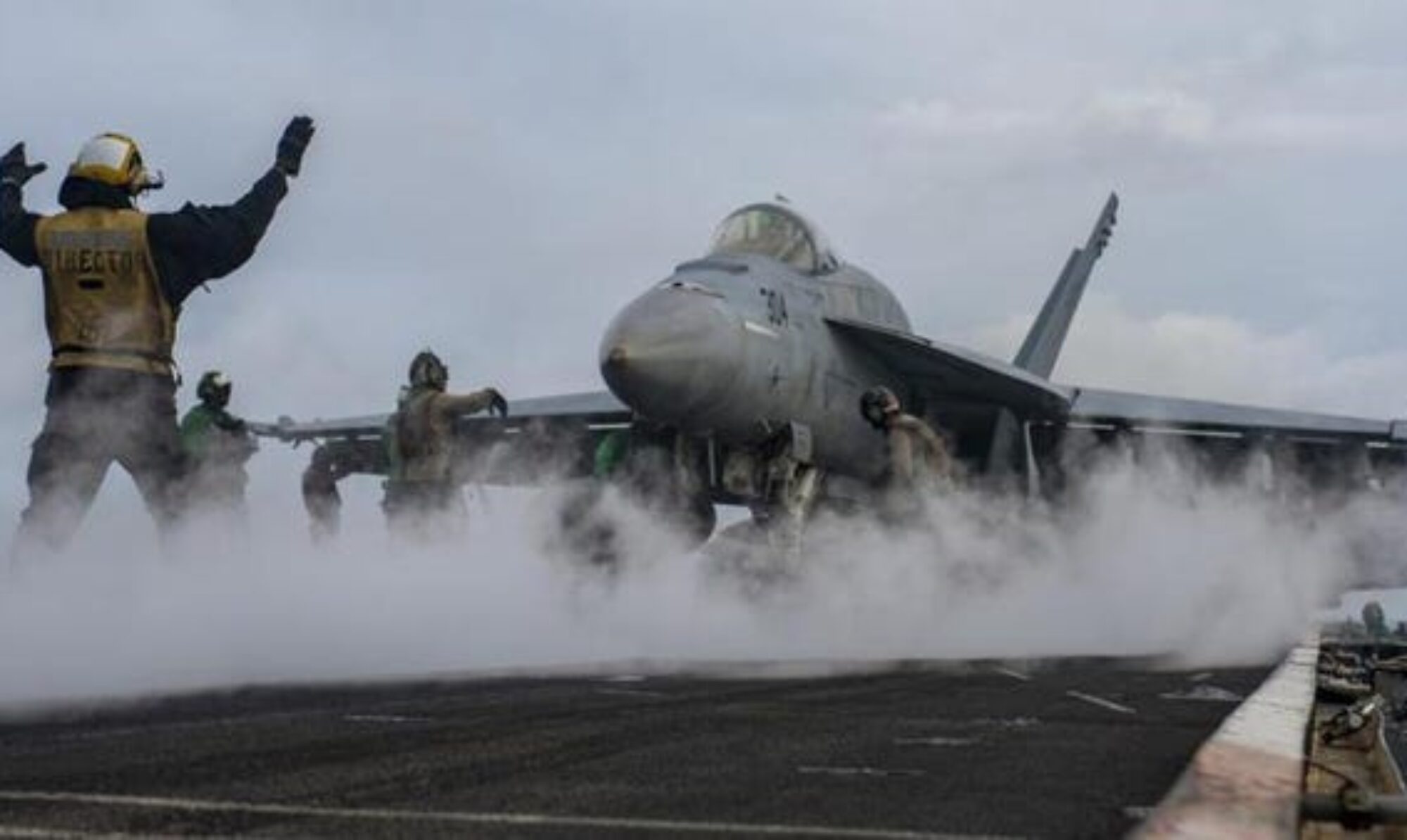
The Associated Press
Hello, and welcome to the blog of the Americans for a Stronger Navy.
We are a group of patriotic citizens who support and appreciate the U.S. Navy and its mission to protect our nation and its interests around the world.
In this blog, we will share with you news, stories, facts, and opinions about the Navy and its amazing ships and sailors.
Today, we want to talk about a recent development that caught our attention: the U.S. House Foreign Affairs Committee chair calling the Russia-China alliance the biggest threat since World War II. This is a serious and alarming statement that reflects the growing challenges and dangers that our Navy and our allies face in the global arena.
What did the U.S. House Foreign Affairs Committee chair say?
The U.S. House Foreign Affairs Committee chair is Rep. Michael McCaul, a Republican from Texas. He made his remarks during a visit to Sweden on September 1, 2023, where he met with the Swedish foreign minister and other officials. He was part of a U.S. congressional delegation that also visited the Netherlands and discussed issues such as support for NATO and Ukraine, ways to hold Russia accountable for its actions in Ukraine, and how to confront shared threats from China.
McCaul said that a partnership between Chinese leader Xi Jinping and Russian President Vladimir Putin worried him, adding, “We have never seen a threat this large scale to Europe and the Pacific, I would argue, since World War II.” He said that an alliance between Beijing and Moscow poses a big challenge for the free world in this great power competition that we find ourselves in.
Why is the Russia-China alliance a threat?
The Russia-China alliance is a threat because it combines two authoritarian regimes that have aggressive and expansionist ambitions in their respective regions and beyond. Both countries have been violating international norms and rules, undermining democratic values and human rights, and challenging the U.S. and its allies’ interests and security.
Some examples of their threatening behavior are:
• Russia’s invasion and annexation of Crimea in 2014, its ongoing support for separatists in eastern Ukraine, its cyberattacks and disinformation campaigns against Western countries, its interference in elections and political processes, its military buildup and provocations near NATO borders, its use of chemical weapons against dissidents, and its development of new nuclear weapons and hypersonic missiles.
China’s militarization of disputed islands and reefs in the South China Sea, its coercion and intimidation of neighboring countries over maritime claims, its violation of Taiwan’s airspace and sovereignty, its crackdown on Hong Kong’s autonomy and democracy, its genocide against Uyghurs and other minorities in Xinjiang, its theft of intellectual property and trade secrets from Western companies, its suppression of free speech and dissent at home and abroad, and its rapid modernization of its military capabilities and space program.
The Russia-China alliance is also a threat because it enables both countries to support each other economically, politically, diplomatically, militarily, and technologically. They have increased their cooperation in various fields such as energy, trade, infrastructure, defense, security, intelligence, science, innovation, culture, media, education, health, and environment. They have also coordinated their positions on global issues such as Iran’s nuclear program, North Korea’s nuclear weapons, Syria’s civil war, Venezuela’s crisis, Myanmar’s coup, Afghanistan’s situation, climate change, human rights, multilateralism, and reform of international institutions.
The Russia-China alliance is especially a threat because it challenges the U.S.-led international order that has maintained peace and stability since World War II. They seek to undermine the credibility and effectiveness of NATO, the European Union, the United Nations, the World Trade Organization, the World Health Organization, and other organizations that promote cooperation and dialogue among nations. They also seek to create alternative blocs and platforms that serve their interests and values such as the Shanghai Cooperation Organization (SCO), the Eurasian Economic Union (EAEU), the Belt and Road Initiative (BRI), the Asian Infrastructure Investment Bank (AIIB), the BRICS (Brazil-Russia-India-China-South Africa) group
How does the Navy respond to the Russia-China alliance?
The Navy is well aware of the threat posed by the Russia-China alliance and is taking various measures to counter it and protect our interests and allies. Some of these measures are:
• Strengthening our alliances and partnerships with like-minded countries that share our values and vision for a free and open Indo-Pacific and a secure and prosperous Europe. The Navy conducts regular exercises, operations, exchanges, and consultations with our allies and partners to enhance our interoperability, coordination, and cooperation. Some examples of these activities are the Malabar naval exercise with India, Japan, and Australia; the Rim of the Pacific (RIMPAC) exercise with 26 nations; the Baltic Operations (BALTOPS) exercise with 18 NATO and partner nations; the Sea Breeze exercise with Ukraine and 31 other nations; the Freedom of Navigation Operations (FONOPs) in the South China Sea; and the Enhanced Forward Presence (EFP) in Eastern Europe.
• Increasing our presence and readiness in the regions where Russia and China are most active and assertive. The Navy deploys its ships, aircraft, submarines, and personnel to strategic locations such as Japan, Guam, Bahrain, Spain, Italy, Romania, Poland, Norway, and Iceland. The Navy also rotates its assets through temporary deployments such as the Carrier Strike Group (CSG), the Amphibious Ready Group (ARG), the Expeditionary Strike Group (ESG), and the Surface Action Group (SAG). The Navy also maintains a continuous nuclear deterrent patrol with its ballistic missile submarines (SSBNs) and a global undersea dominance with its attack submarines (SSNs).
• Modernizing our capabilities and platforms to match or exceed those of Russia and China. The Navy invests in research, development, acquisition, and innovation of new technologies, systems, weapons, and concepts that will give us an edge over our adversaries. Some examples of these initiatives are the Columbia-class SSBN program, the Constellation-class frigate program, the F-35C Lightning II fighter jet program, the MQ-25 Stingray unmanned aerial refueling tanker program, the Naval Strike Missile (NSM) anti-ship cruise missile program, the Hypersonic Glide Body (HGB) weapon system program, the Distributed Maritime Operations (DMO) concept, and the Naval Integrated Fire Control-Counter Air (NIFC-CA) network.
What can we do to support the Navy?
As members and subscribers of #AmericansforaStrongerNavy, we can do many things to support the Navy and its mission to counter the Russia-China alliance. Some of these things are:
• Educating ourselves and others about the threat posed by the Russia-China alliance and the importance of maintaining a strong and capable Navy. Stay informed by subscribing to the blog and newsletter. We can also share these sources with our friends, family, colleagues, and social media followers.
• Advocating for adequate funding and resources for the Navy to sustain its current operations and modernize its future capabilities. We can contact our representatives in Congress and urge them to support the Navy’s budget requests and legislative priorities. We can also sign petitions, join campaigns, attend rallies, write letters, or make phone calls to express our views and opinions.
• Appreciating and honoring our Navy sailors who serve our country with honor and excellence. We can send them letters, cards, care packages, or donations to show them our gratitude and support. We can also volunteer for organizations that assist Navy families, veterans, or wounded warriors. We can also attend or host events that celebrate or commemorate Navy achievements or milestones.
Conclusion
In conclusion, we hope you learned something new and interesting about the Russia-China alliance and how it affects our Navy and our nation. We also hope you feel inspired and motivated to support our Navy in its efforts to counter this threat and protect our interests and allies. We thank you for reading this blog post and for following #AmericansforaStrongerNavy. Please leave your comments below or contact us if you have any questions or feedback. Stay safe and stay Navy!

